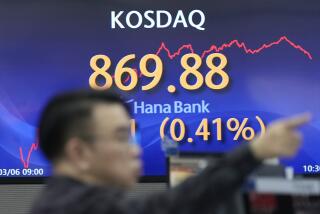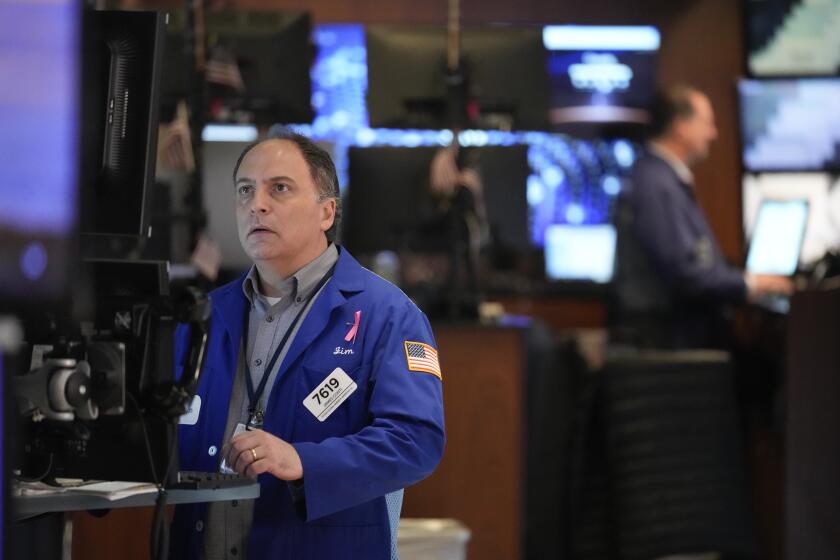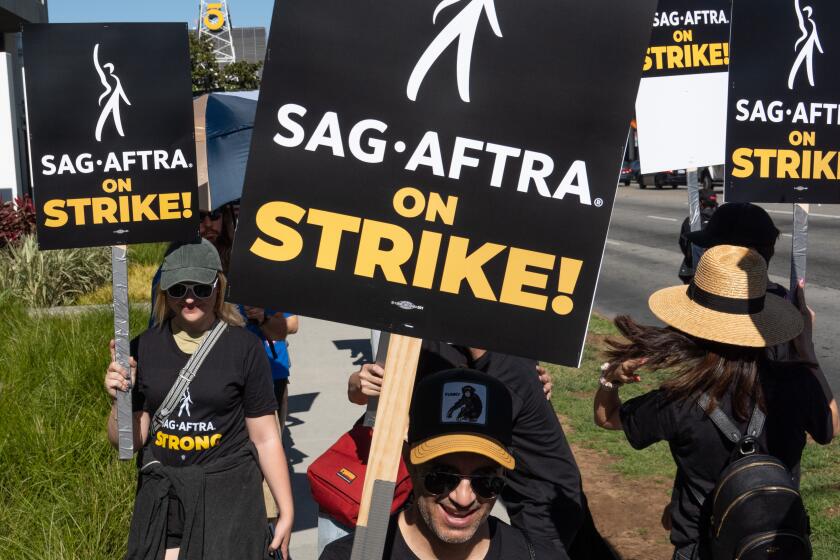Bankers’ image as pariahs leaves stocks with few friends
A classic rule of both shopping and investing is that when most people steer clear of something, there may be bargains for the smart money.
Yet it doesn’t always work that way at your local dollar store — or with beaten-down stocks.
That’s the challenge investors face with bank shares, particularly those of the industry’s titans.
Many Americans see bankers as pariahs and can’t understand why so few industry executives have faced prosecution for the excesses of the mortgage-bubble era.
But if the bankers have avoided jail, their stocks haven’t: After bouncing since 2009, bank shares are the biggest losers of any major industry sector this year, even as the market overall has rallied.
The KBW index of 24 major U.S. bank stocks is down nearly 5% year to date, while the Standard & Poor’s 500 index is up 5.8%.
The declines have been most severe among the largest banks. Shares of Bank of America Corp. are down 12% in 2011. Citigroup’s stock is off 13%, Wells Fargo & Co. has fallen 9% and Goldman Sachs Group Inc. has plunged 17%.
JPMorgan Chase & Co. has the best performance of the lot, flat for the year.
The megabanks “have the tobacco-company tinge,” said David Ellison, a veteran bank-stock investor at money manager Friedman Billings Ramsey in Boston.
Like the tobacco giants in the 1990s, the megabanks now are viewed as prime sources of society’s ills — and logical targets from which to demand hefty financial penalties.
The public hasn’t gotten the banker perp walks it might have hoped for, but state attorneys general are trying to force the biggest banks to pony up somewhere around $20 billion to settle allegations of unfair home foreclosure practices.
And this week, California Atty. Gen. Kamala Harris formed a 25-person task force to target mortgage fraud, including deceptive bank lending practices, past and present.
The money merchants’ legal ills don’t end there. Goldman Sachs’ stock has been hammered since Sen. Carl Levin (D-Mich.) last month asked the Justice Department to look into the findings of a two-year Senate probe of the bank’s dealings in mortgage-backed securities. The implication is that Goldman executives could face criminal charges related to what Levin called “misleading” testimony to Congress.
Goldman said its testimony was “truthful and accurate.”
Unrelated to the mortgage debacle, two other big banks — State Street Corp. and Bank of New York Mellon — are fighting state lawsuits alleging that the banks overcharged pension funds for currency trades.
“You name it, someone is suing the banks over it,” said Dick Bove, banking industry analyst at Rochdale Securities in Lutz, Fla.
Even without its legal woes, the industry faces growing questions about its fundamental health.
The government’s bailout program launched in late 2008 kept the financial system from spiraling into a black hole, and the Federal Reserve’s easy-money policy has supported the banks since then by keeping their deposit costs near rock bottom as they work off bum loans and boost their capital cushions.
But investors this year are focused on three concerns about the industry’s future:
•Earnings are up but revenue is down.
The nation’s 7,500 banks and thrifts reported total earnings of $29 billion in the first quarter, the most for any quarter since the second period of 2007, according to the Federal Deposit Insurance Corp. But total industry revenue fell from a year earlier, only the second such drop in 27 years, the FDIC said.
What’s more, revenue weakness was concentrated among the biggest banks. Why? A lack of loan growth and declines in certain consumer service charges as ordered under the Dodd-Frank financial reform bill that Congress passed last year.
With any business, if you can’t generate revenue growth, you’re eventually going to have a hard time generating earnings growth.
•The housing market is sinking again.
The hoped-for spring recovery mostly is a no-show, with home prices continuing to slide and sales lackluster despite another drop in mortgage rates.
Banks wrote off $149 billion in bad home mortgage loans from mid-2007 through 2010, Standard & Poor’s calculates in a new report. The $1.8 trillion in residential loans still on the books account for about 14% of banks’ total assets. Home equity loans are an additional 4.6% of assets and mortgage-backed bond holdings are 11%.
S&P looked at what a serious double dip in housing might mean for future bank loan losses. Assuming home prices were to fall another 15% by December 2012, S&P estimated that losses on banks’ remaining home loans and mortgage-backed bonds would be as much as $80 billion more than if the average home price decline were limited to about 5%.
That $80 billion would amount to about 35% of the industry’s projected pretax operating income for the period, S&P said. That is a “sizable potential risk” for the industry, it said.
•What happens when short-term interest rates rise?
A popular perception is that rising rates are bad for financial firms. And in fact, bank shares overall lagged behind the broader market in 2004 and 2005, when the Fed was continually lifting its benchmark short-term rate.
But rising rates can be good for banks if they can boost their loan rates faster than their deposit rates, which of course would be their preferred strategy. And if the reason for higher interest rates was that the economy was picking up speed, that could be positive for banks by fueling loan growth and reducing the risk of loss on outstanding loans.
In any case, the likelihood of the Fed raising rates any time soon has faded with the economy’s slowdown in recent months.
Megabank investors should be more concerned about the status quo, said Christopher Whalen, a principal at research firm Institutional Risk Analytics. By maintaining near-zero short-term rates, he said, the Fed is “turning the largest U.S. banks into permanent zombies with unprofitable core banking operations.”
Still, if all of these negatives are known to investors, the bullish case for bank stocks is that they may already be priced for the worst-case scenario, and don’t reflect what might go right for the industry. Despite their gains since March 2009, bank stocks in general remain shadows of their former selves. The KBW index of 24 bank issues still is down 44% from the end of 2007 while the S&P 500 index is off 9% in the same period.
A rational argument for buying bank shares is that we can’t have a healthy economy again without a healthy financial sector.
But if the U.S. economy can get back to some semblance of health, investors may figure there will be plenty of stocks to own that are more exciting — and less viscerally objectionable — than the banks’.






